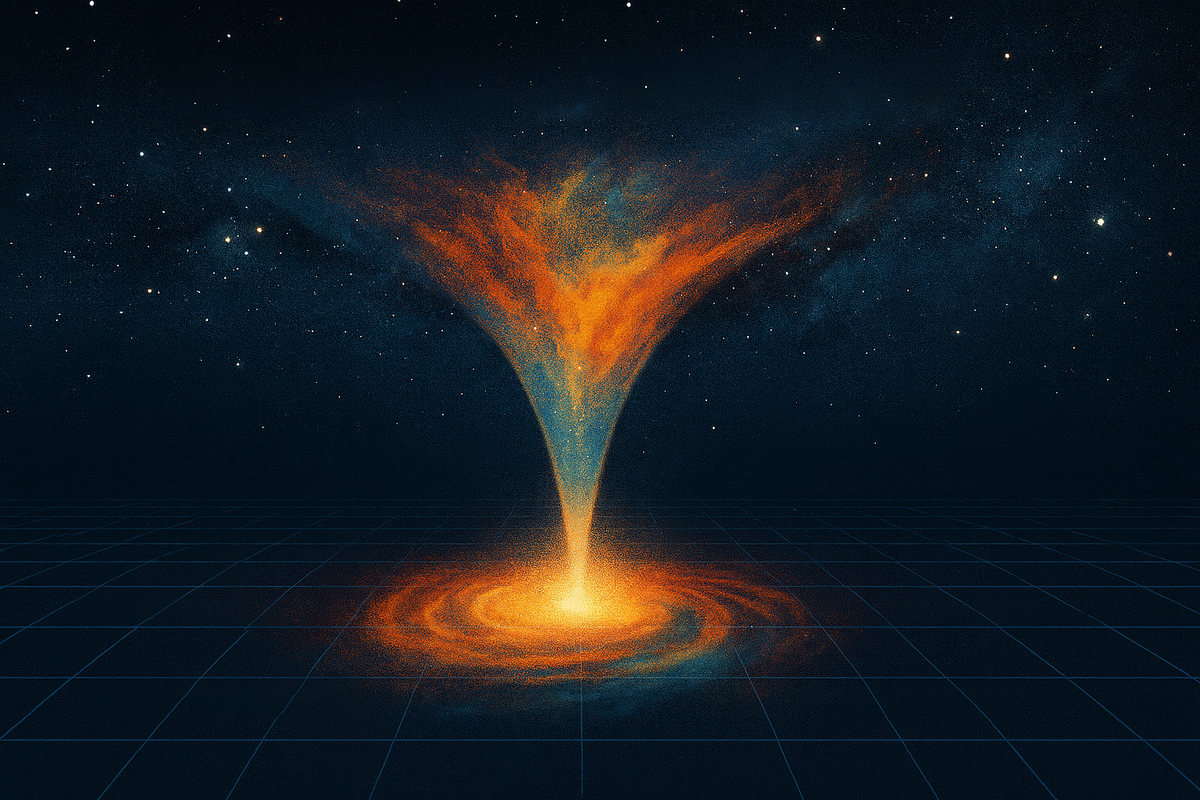A Universe From...Nowhere?

What if the whole universe — space, time, and everything in it — were a quantum object?
That’s the question behind quantum cosmology, a field that applies the strange rules of quantum mechanics to the entire cosmos.
Einstein’s general relativity explains how the universe expands and how gravity shapes space and time. It works beautifully...except at the very beginning.
At the Big Bang, when the universe was unimaginably small and dense, relativity breaks down. The smooth fabric of spacetime must have been jittering with quantum uncertainty. To understand that moment, we have to combine relativity with quantum theory.
The Wavefunction of the Universe
In quantum physics, everything is described by a wavefunction — a mathematical object that encodes all possible states of a system. For an electron, it tells us the chances of finding it here or there.
Quantum cosmology asks: what’s the wavefunction of the universe itself?
To answer that, physicists use what is called a path integral, summing over all possible geometries and histories of spacetime. Each potential universe contributes to the total wavefunction, weighted by its quantum probability.
The result doesn’t describe one cosmos, but a superposition of many possible universes.
A Universe Without an Edge
If the universe is quantum, what are its boundary conditions? How did it begin?
Two classic ideas try to answer this.
1. The “No-Boundary” Universe
Proposed by James Hartle and Stephen Hawking, this idea says the universe has no sharp beginning — no edge in time. Instead, time behaves like space near the start, rounding off smoothly like the North Pole on a globe. The universe simply emerged, finite but without a boundary. This was an attempt to not only avoid a "singularity" at time zero, but also to dispel the need for some sort of "Creator" or someone/thing outside of the universe bringing it into being.
2. The “Tunneling” Universe
Physicist Alexander Vilenkin took a different approach. He imagined the universe tunneling out of nothing, like a quantum particle passing through a barrier. In this view, the cosmos appeared spontaneously — not from something, but from a quantum fluctuation of nothing at all. Well, that is how it is often skewed in pop science. "Nothing" here is referring to what is know as the "ground state" of the wavefunction, so technically still "something".
A Mirror Between Beginnings
Our recent paper, “Reflection Symmetry and Self-Duality in Quantum Cosmology,” shows these two ideas may actually be two sides of the same coin.
We found a hidden reflection symmetry in the mathematics of quantum gravity — a kind of mirror that links small and large scales, past and future.
This self-duality unifies the no-boundary and tunneling pictures as complementary aspects of a single quantum structure. In this sense, we argue that claims of eternal time or a universe from nothing are classic cases of overdeterminism. That is, claims (stories, essentially) are going beyond what the math is yielding.
We show that just as Hawking famously quipped [paraphrasing] "asking about the beginning of the universe is like asking what is north of the North Pole. It is a nonsensical question." What we show is that the exact same math/symmetry can allow you to change the question to "What is east of east?" or "Did the universe come from...nowhere?".




